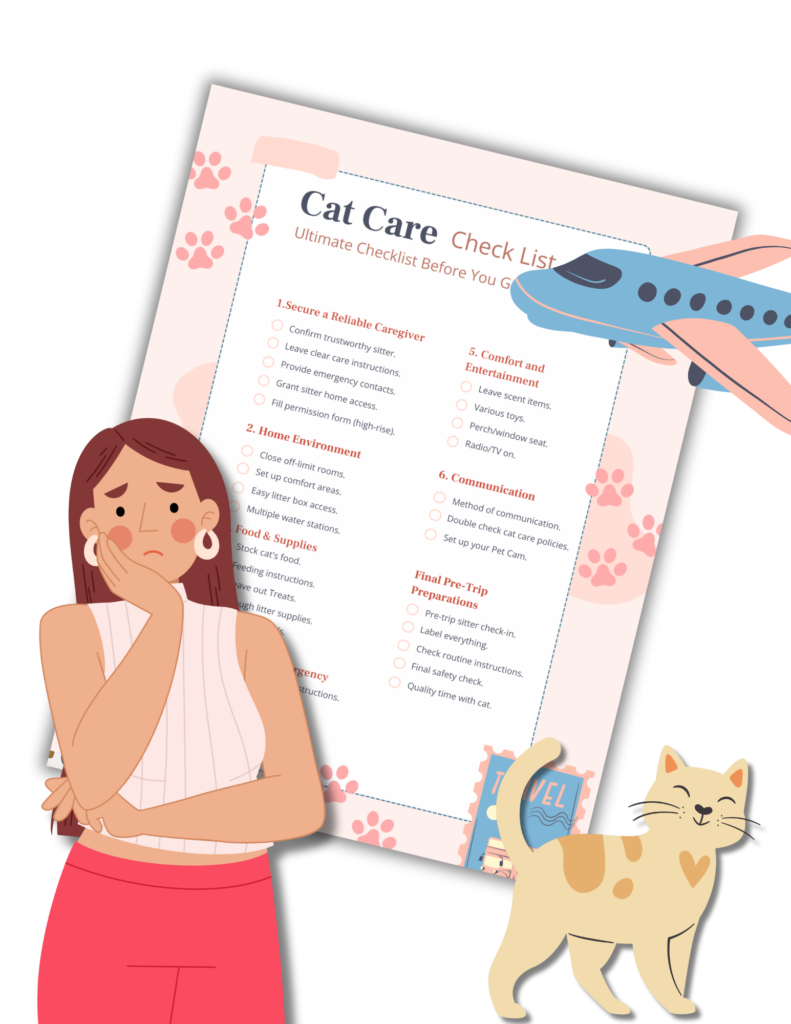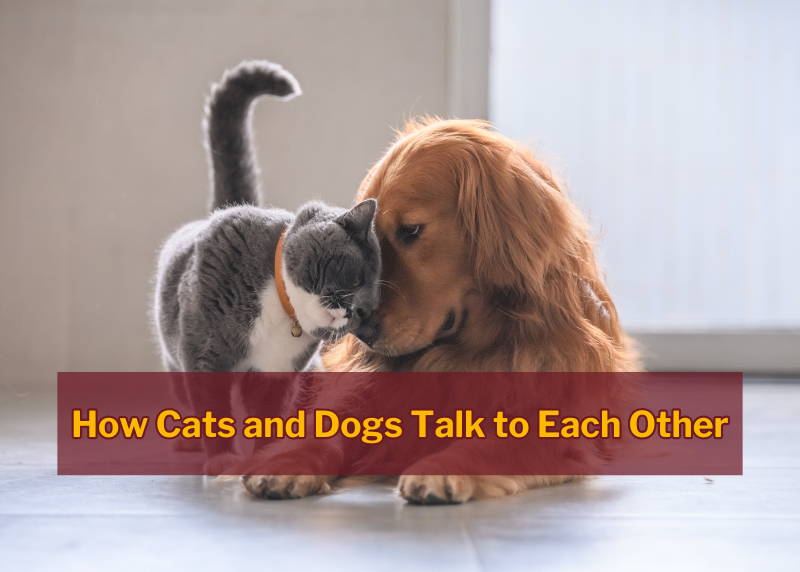By Briseis Schreibman, Edited by Abbi Colborn
I’m sure we’ve all heard the phrase “communication is key” hundreds upon hundreds of times, and for a good reason too. Whether navigating the workplace, or even everyday interactions with friends, the value of respectful communication can not be emphasized enough. But what does this look like for our pets?
You Might Also Like:
- Tips for Keeping Your Indoor Cat Happy and Healthy
- How to Start Training a Puppy
- How to Properly Handle Your Cat’s Food
When my family first introduced dogs into our cat-centric home, we experienced firsthand the complexities of their friendships. These days, it’s no surprise to see our cats and dogs snuggled up in a pile or even engaging in gentle play. But it took a few months to a year for their friendship to truly blossom.
Disclosure: Some articles on this site may contain affiliate links, meaning, at non additional cost to you, Chicago Urban Pets may earn a commission if you click through and make a purchase. As an Amazon Associate we earn from qualifying purchases.

Introductions
Introducing your pets to each other involves a lot of moving parts. Any new stimulus is going to be stressful for your furry friend. In the beginning, there will be confusion, misinterpretation, and reactions. Be sure to offer grace to your furry companions as well as yourself during the transitional period of becoming a two pet household. If you see any hair bristling, hissing, growling, a dogs tail between legs, a cat’s tail up and poofed, ears back or flat against head, it’s time to disengage the animals from each other’s sight. Having a safe place like a cat tree or dog kennel for the pet to return to and relax may be helpful to disengage the tense introduction.
Cats and dogs are more than capable of living in harmony.
Interpreting body language and scent marking also play key roles in interspecies communication. Once the animals are used to each other’s scent and demeanor, it’s easier for them to understand they’re not a threat to each other. It may be helpful to place a blanket with the other pets scent in the area so they can become acquainted to each others smells before a face-to-face interaction.

Tips For a Smooth Transition
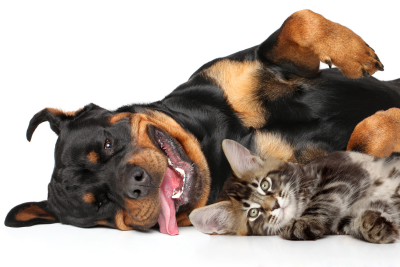
As mentioned earlier, adding another pet to the home is a heck of a ride. Here’s some things you can do to make everyone more comfortable in the adjustment:
Do Your Research
Arming yourself with knowledge is always wise. Before introducing the pet, refresh your memory on body language for both cats and dogs. Luckily, because they’re both mammals, they share a lot of similar behaviors when scared.
Prepare Your Space
Set up safe spaces for both your cat and dog, away from each other. Cats hide when they’re in a new environment (I rarely saw my cat out and about for the first two days after I adopted her). Having a place for your animals to go and decompress will help them feel safe in your home.
Bit by Bit
Gradually let your pets discover each other. Let your cat explore the home while your dog is crated, or behind a baby gate. Let your dog observe, If he gets too energized, distract him with a treat or toy. Playing with your dog in a gated area in view of your cat will also help socialize them.
Know Their Limits
Some cats and dogs will never gel perfectly. Never try to force anything between your pets. Their relationship will grow over time, and will be unique to them. Some cats and dogs become best friends, but some simply learn to adjust their routines to avoid each other. If that’s the relationship your pets end up fostering, know that it’s still a success.
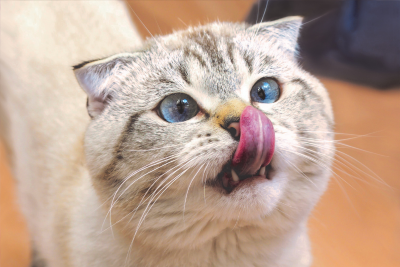
Looking For Cat Sitting Services In The Chicago Area?
SIGN UP FOR PURRRRRR QUALITY CAT CARE TODAY!
Building Trust Can Take Time
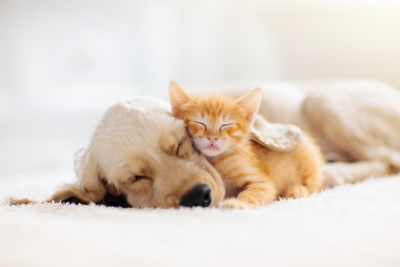
When given time to explore, both animals can learn how to respond to each other even if they don’t “speak the same language.” For instance, in cat language, a tail swishing from side to side might signal agitation, but to a dog, this may seem like happy wagging. With time, animals learn to decode these symbols to better understand their new friend.
Sound familiar? It is! Just the same as humans and animals must be patient while getting to know each other; animals must be patient with each other too. If you have any personal stories of cat-dog relationships or other unlikely animal friendships tag us on Instagram, we’d love to hear your experiences!

If you’re based in Chicago, we recommend Green Paws Chicago for compassionate, professional dog walking. They’re a trusted local service that helps your dog stay active and social even while you’re away.
(When signing up, don’t forget to mention Chicago Urban Pets to support the blog and help us continue creating helpful content.)
Ultimate Cat Care Checklist Before you Go
